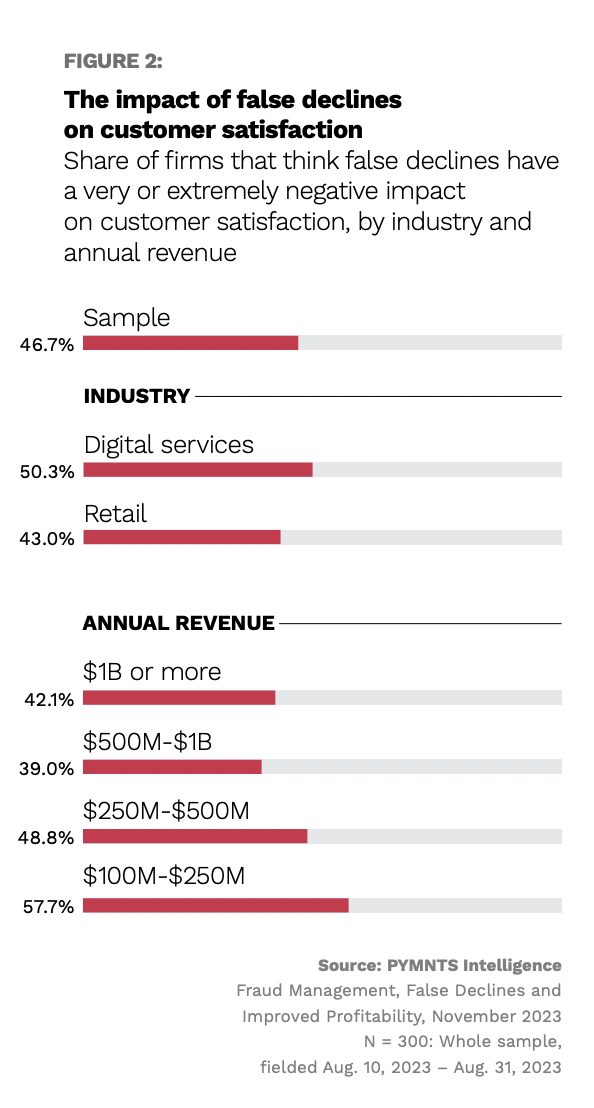43% of Retailers Say False Declines Are a Major Problem for Shoppers

As retailers look to offer positive payment experiences to shoppers to keep them coming back, a significant share sees false declines as a sticking point, PYMNTS Intelligence research shows.

By the Numbers
The PYMNTS Intelligence study “Fraud Management, False Declines and Improved Profitability,” created in collaboration with Nuvei, draws on insights from a survey last summer of 300 executives from eCommerce firms generating annual revenues of more than $100 million who have deep knowledge of their company’s payments systems. The report examines the current state of play for failed payments in the eCommerce space.
False declines occur when legitimate transactions are incorrectly flagged as fraudulent and declined by payment processors or retailers. This can lead to frustration and inconvenience for customers who are wrongly denied the ability to complete their purchase. As a result, it negatively impacts their overall shopping experience.
Indeed, the findings of the survey reveal that 43% of retailers think false declines have a very or extremely negative impact on customer satisfaction.
The Data in Context
Elizabeth Graham, then product manager at Entersekt (now senior product manager), said in an interview with PYMNTS last year that false declines carry big risks for merchants, where consumer loyalty is critical.
“False declines are such a problem in the industry that 80% of merchants use this measure as a key metric within the organization,” Graham told PYMNTS.
This can be a key issue for subscription-based companies, given the frequency with which they bill. Merchants need to have the technical flexibility to retry a payment or update credit card numbers in advance of a card expiring, Thomas Marks, senior vice president of growth at sticky.io, told PYMNTS in an interview over the summer.
“It’s really important to think beyond just the basic subscription management and recurring billing to consider the holistic ecosystem that revolves around [the payment experience],” Marks said.

